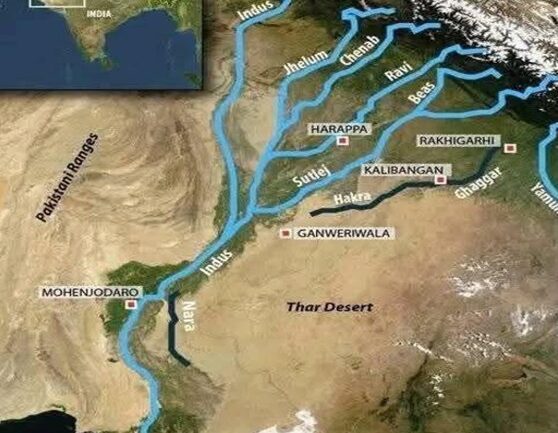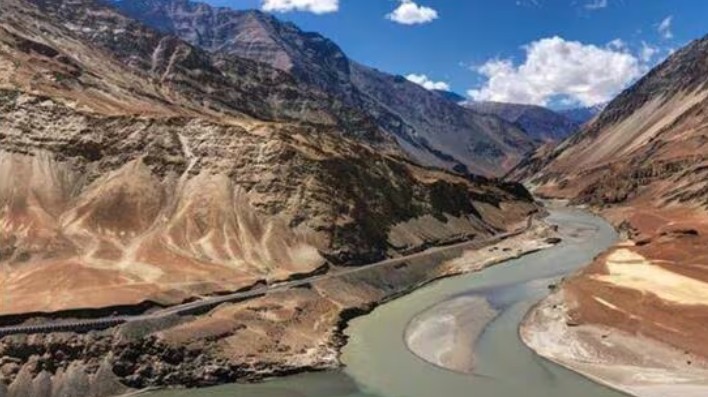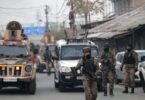Amid the war hysteria in the aftermath of Pahalgam massacre, comes the fake news of Indian Rafale jets patrolling Pakistan occupied Kashmir (POK) and government’s announcement for a caste census; latter seen an effort to divert attention from the crisis at home because few months back Prime Minister Narendra Modi called it an “Urban Naxal” thought. However, the Indus Water Treaty (IWT) continues to attract media attention.
Modi said Congress's pitch for Caste Census is an 'Urban Naxal' thought during Lok Sabha Elections 2024.
— Roshan Rai (@RoshanKrRaii) April 30, 2025
Today, he passed the same Urban Naxal thought 🤣🤣🤣
How will his Bhakts defend this?#CasteCensus pic.twitter.com/E0NEHdtw0u
After the Pakistan-sponsored Pulwama car-bombing in 2019, India held the IWT “in abeyance”, not “suspended” as the media said. The same was announced after the Pahalgam massacre – so what’s new? Timing of releasing/holding back waters plus flooding can adversely affect Pakistan’s agro-economy, depending on capacity of reservoirs and ecosystem to divert waters within India. Jal Shakti Minister CR Paatil saying India would not allow a “single drop” of water to flow into Pakistan is political hoopla since according to one study a minimum of 22 Bhakra Nangal-sized dams are required to store water that currently flows into Pakistan (https://www.indiatoday.in/india/story/indus-waters-treaty-suspended-storage-dams-india-pakistan-jhelum-chenab-2716996-2025-04-29).

It was covered in these columns earlier that India has the option to “legally exit” the IWT (https://www.thestrategicperspective.org/op-eds/anatomizing-pahalgam-massacre/), which India should now do. The legal battle will be long because India’s contention of Pakistani terrorism will be denied by Pakistan and how many nations will firmly blame Pakistan for terrorism is debatable, looking at the aftermath of the Pahalgam massacre. But we should initiate the process to legally exit the IWT, which gives exclusive rights to Pakistan on Indus, Chenab and Jhelum rivers, and to India on Sutlej, Beas and Ravi rivers, and concurrently proceed with how best we can use these waters.
India is reportedly set to accelerate five key hydro-power projects in J&K (Bursar Plant, Dulhasti II, Swalkote HEP, Uri Stage II, and Kirthai II) along the Jhelum and Chenab rivers (https://www.facebook.com/story.php?story_fbid=648957628035710&id=100087644345984) although the timelines for these (commencement and completion) in terms of months/years is not known. An in-depth study on the IWT was done by the National Security Coordination Secretariat (NSCS), which functions under the Prime Minister’s Office (PMO), during 2019-2020. The National Security Advisory Board (NSAB) has also been examining the issue, as well as the Central Water Commission.
In May 2022, the article ‘Weaponization of Cross Border Water Courses’ by veteran Lt Gen PG Kamath was published in the Indus International Research Foundation (https://indusresearch.in/weaponisation-of-cross-border-water-courses-by-lt-gen-pg-kamath-veteran/). The article mentions: power of upper riparian nations to weaponize cross-border waters to help win wars; how this applies to India; China has no water-sharing agreement – believes its sovereign right to use the waters whichever way it wants; in contrast, India has water-sharing agreements with Pakistan and Bangladesh; China has already weaponised and used this weapon in 2000 and 2004 against India; Pakistan’s reliance on the Indus Water System for agriculture and hydro power is almost total but we haven’t used this against Pakistan; Pakistan will call it an act of war, which is why we need a National Security Strategy, which should also address mitigating the Two and Half Front War.
In a recent article on April 27, 2025, Sanjeev Nayyar recommends how to go about chalking a short to medium plan to mitigate the IWT and weaponize these waters (https://esamskriti.com/e/National-Affairs/Ideas-ad-Policy/Decoding-suspension-of-the-Indus-Water-Treaty-1.aspx). Obviously, the government would be taking all these inputs into account and working on a holistic plan; the urgency is more considering that the Pakistani establishment is deep in the gutter of immorality and extreme radical Islam from where there is no return, as explained by Naela Quadri Baloch
At the same time, India should also commence work on exiting the Ganga Water Treaty and weaponize waters flowing into Bangladesh because Bangladesh is also going down the same gutter as Pakistan (https://theprint.in/world/retd-bangladeshi-major-general-calls-for-occupation-of-indias-northeast-if-it-attacks-pakistan/2610558/). As an upper-riparian nation, India must have a comprehensive approach.
According to a recent media report, Haryana’s Saraswati Heritage Development Board (HSHDB), in collaboration with the Haryana Space Centre and the Central Water Commission, is preparing a major project to divert water from the Sutlej River in Himachal Pradesh into the Saraswati River (https://timesofindia.indiatimes.com/india/saraswati-board-plans-to-channel-sutlej-river-water-into-saraswati-collaboration-with-haryana-space-center-and-central-water-commission-underway/articleshow/120672824.cms). Another newspaper report says Haryana is wanting more water from Punjab, but Punjab says there is no water to spare.
While India addresses weaponizing cross-border waters, which must be on a war footing, it is as necessary to address the water scarcity in India. India’s river interlinking project is in three parts:
- one, northern Himalayan rivers interlinking component;
- two, a southern peninsular component;
- three, starting 2005, an intrastate river-linking component.
The project is managed by the National Water Development Agency (NWDA), under the Ministry of Jal Shakti. NWDA has studied and prepared reports on 14 interlink projects for the Himalayan component, 16 for the peninsular component, and 37 intrastate river-linking projects. But it is not known whether these projects have been put into motion at all and what is the time schedule and completion. Moreover, will these suffice for India’s mid and long-term requirements? Will water reach all the places that are perpetually parched, plus those in summers like Delhi/NCR where the water-tanker mafia operates under political patronage minting crores?
click on picture to open
India was placed 13th among the world's 17 ‘extremely water-stressed’ countries (while Pakistan, was under ‘extremely high’ levels of baseline water stress) in 2019 (https://www.downtoearth.org.in/water/india-world-s-13th-most-water-stressed-country-wri-66066). India is considered a water-starved nation, facing significant water scarcity despite having access to 0.4% of world’s water resources. The country faces challenges due to population growth, urbanization, and industrialization, leading to decreased per capita water availability and increasing demand. Water scarcity in India is an ongoing crisis that affects nearly hundreds of millions of people each year. Of India’s 1.4 billion population, 35 million people lack access to safe water and 678 million people lack access to a safe toilet. India's large population and increased water demand, particularly for agriculture, put significant strain on its resources,
Current challenges include extreme water stress, limited supply, effects of climate change and lack of access to piped water supply, aggravated by factors like inefficient water use and management practices. Interestingly, most parts of the country receive generous amounts of rainfall, but still there is an acute shortage of water for agricultural and domestic use throughout the year. Addressing this requires a multifaceted approach involving improved water management practices, infrastructure development, and policy changes. So, while we weaponize cross-border water, a water shield for India’s population is also the need of the hour. Perhaps the need is for more canals crisscrossing India.
The author is an Indian Army veteran. Views expressed are personal.











